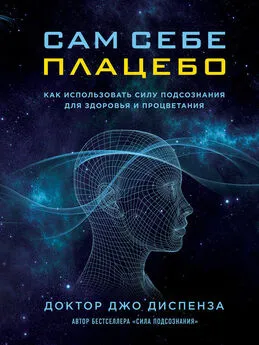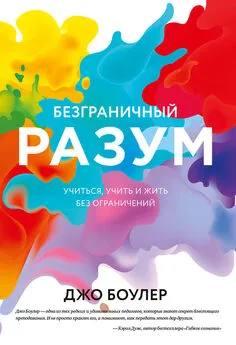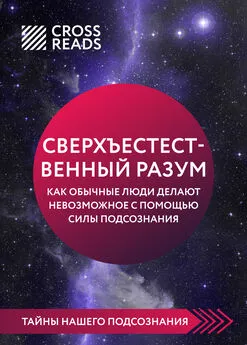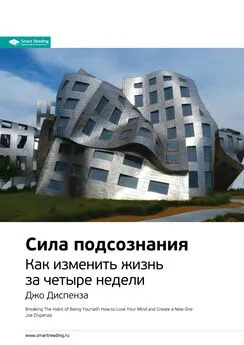Джо Диспенза - Сверхъестественный разум
- Название:Сверхъестественный разум
- Автор:
- Жанр:
- Издательство:Литагент 5 редакция
- Год:2017
- Город:Москва
- ISBN:978-5-04-089158-0
- Рейтинг:
- Избранное:Добавить в избранное
-
Отзывы:
-
Ваша оценка:
Джо Диспенза - Сверхъестественный разум краткое содержание
Применяя методы и техники новейших разработок в области эпигенетики, молекулярной биологии, нейрокардиологии и квантовой физики, до практических занятий, таких как медитация стоя и при ходьбе, доктор Джо Диспенза предлагает программу для выхода за пределы вашей физической реальности и вхождения в квантовое поле бесконечных возможностей.
Сверхъестественный разум - читать онлайн бесплатно ознакомительный отрывок
Интервал:
Закладка:
Также я хочу выразить признательность Мелиссе Ватерман, бакалавру наук, дипломированному социальному работнику, за экспертное участие в измерениях по методу газоразрядной визуализации и с помощью прибора «Спутник». Спасибо за все, что вы сделали для нашей работы. И за то, что привнесли такую ясность в наши исследования. И за то, что всегда были рядом.
Огромная признательность Доусону Чарчу, доктору философии, за его гениальность и дружбу. Ты был в числе тех, кто верил, что мы в силах изменить экспрессию генов у обычных людей за несколько дней на наших семинарах. Я благодарен тебе за то, что ты был частью нашей команды и таким ценным источником научных сведений. Я счастлив, что знаю тебя.
И особенная благодарность Роллин МакКрэти, доктору философии, Джеки Ватерман, Ховарду Мартину и всей команде Института математики сердца. Вы так поддерживали наши исследования и бескорыстно делились всем, чем только можно. Я счастлив нашему общению.
Я хотел бы выразить признательность команде, управляющей моей компанией корпоративного обучения. Это Сюзанна Квалиа, Бет Вольфсон и Флоренс Йегер. Спасибо вам за то, что разделяете мое видение. И также я испытываю особенную признательность ко всем остальным корпоративным инструкторам по всему миру, работающим с таким прилежанием, чтобы быть живым примером саморазвития и лидерства для стольких людей.
Я хотел бы поблагодарить Юстину Ружчик, которая нашла время, чтобы понять эту работу на очень глубоком уровне. Спасибо вам за помощь в развитии некоторых коучинговых программ. Я с нетерпением жду наших новых встреч.
Спасибо Греггу Брейдену за сердечное и мощное предисловие. Ты настоящий уникум. Я очень ценю нашу дружбу.
Я не в силах выразить всю свою признательность Роберте Бриттингэм. Вы для меня самая чудесная, загадочная, сердечная личность из всех. Спасибо вам за всю вашу любовь и поддержку. Я также хотел бы выразить признательность за вашу работу по созданию нашего калейдоскопа. Никто, кроме вас, не смог бы сделать из этого такое произведение искусства.
И спасибо моим детям: Джейсу, Жанне и Шан. Вы неповторимые, полные сил и здоровья юные люди, так щедро дающие мне время для следования за своей страстью.
И наконец, я хочу выразить признательность всему студенческому сообществу, принимавшему участие в нашей работе. Вы так меня вдохновляете, ведь вы становитесь сверхъестественными.
Список литературы
1. Global Union of Scientists for Peace, “Defusing World Crises: A Scientific Approach,” https://www.gusp.org/defusing-world-crises/scientific-research/.
2. F. A. Popp, W. Nagl, K. H. Li, et al., “Biophoton Emission: New Evidence for Coherence and DNA as Source,” Cell Biophysics , vol. 6, no. 1: pp. 33–52 (1984).
1. R. M. Sapolsky, Why Zebras Don’t Get Ulcers (New York: Times Books, 2004). In addition, emotional addiction is a concept taught at Ramtha’s School of Enlightenment; see JZK Publishing, a division of JZK, Inc., the publishing house for RSE, at http://jzkpublishing.com or http://www.ramtha.com.
1. Also known as Hebb’s Rule or Hebb’s Law; see D. O. Hebb, The Organization of Behavior: A Neuropsychological Theory (New York: John Wiley & Sons, 1949).
2. L. Song, G. Schwartz, and L. Russek, “Heart-Focused Attention and Heart-Brain Synchronization: Energetic and Physiological Mechanisms,” Alternative Therapies in Health and Medicine , vol. 4, no. 5: pp. 44–52, 54–60, 62 (1998); D. L. Childre, H. Martin, and D. Beech, The HeartMath Solution: The Institute of HeartMath’s Revolutionary Program for Engaging the Power of the Heart’s Intelligence (San Francisco: HarperSanFrancisco, 1999), p. 33.
3. A. Pascual-Leone, D. Nguyet, L. G. Cohen, et al., “Modulation of Muscle Responses Evoked by Transcranial Magnetic Stimulation During the Acquisition of New Fine Motor Skills,” Journal of Neurophysiology , vol. 74, no. 3: pp. 1037–1045 (1995).
4. P. Cohen, “Mental Gymnastics Increase Bicep Strength,” New Scientist , vol. 172, no. 2318: p. 17 (2001), http://www.newscientist.com/article/dn1591-mental-gymnastics-increase-bicep-strength.html#.Ui03PLzk_Vk.
5. W. X. Yao, V. K. Ranganathan, D. Allexandre, et al., “Kinesthetic Imagery Training of Forceful Muscle Contractions Increases Brain Signal and Muscle Strength,” Frontiers in Human Neuroscience , vol. 7: p. 561 (2013).
6. B. C. Clark, N. Mahato, M. Nakazawa, et al., “The Power of the Mind: The Cortex as a Critical Determinant of Muscle Strength/Weakness,” Journal of Neurophysiology , vol. 112, no. 12: pp. 3219–3226 (2014).
7. D. Church, A. Yang, J. Fannin, et al., “The Biological Dimensions of Transcendent States: A Randomized Controlled Trial,” presented at French Energy Psychology Conference, Lyon, France, March 18, 2017.
1. N. Bohr, “On the Constitution of Atoms and Molecules,” Philosophical Magazine , vol. 26, no. 151: pp. 1—25 (1913).
2. Church, Yang, Fannin, et al., “The Biological Dimensions of Transcendent States: A Randomized Controlled Trial.”
3. Childre, Martin, and Beech, The HeartMath Solution .
4. “Mind Over Matter,” Wired (April 1, 1995), https://www.wired.com/1995/04/pear.
1. Popp, Nagl, Li, et al., “Biophoton Emission: New Evidence for Coherence and DNA as Source.”
2. L. Fehmi and J. Robbins, The Open-Focus Brain: Harnessing the Power of Attention to Heal Mind and Body (Boston: Trumpeter Books, 2007).
3. A. Hadhazy, “Think Twice: How the Gut’s ‘Second Brain’ Influences Mood and Well-Being,” Scientific American Global RSS (February 12, 2010), http://www.scientificamerican.com/article/gut-second-brain/.
4. C. B. Pert, Molecules of Emotion (New York: Scribner, 1997).
5. F. A. Popp, “Biophotons and Their Regulatory Role in Cells,” Frontier Perspectives (The Center for Frontier Sciences at Temple University, Philadelphia), vol. 7, no. 2: pp. 13–22 (1988).
6. C. Sylvia with W. Novak, A Change of Heart: A Memoir (New York: Warner Books, 1997).
7. P. Pearsall, The Heart’s Code: Tapping the Wisdom and Power of Our Heart Energy (New York: Broadway Books, 1998), p. 7.
1. M. Szegedy-Maszak, “Mysteries of the Mind: Your unconscious is making your everyday decisions,” U. S. News & World Report (February 28, 2005).
2. M. B. DeJarnette, “Cornerstone,” The American Chiropractor , pp. 22, 23, 28, 34 (July/August 1982).
3. Ibid.
4. T. Kenyon and V. Essene, The Hathor Material: Messages from an Ascended Civilization (Santa Clara, CA: S.E.E. Publishing Co., 1996).
5. D. Church, G. Yount, S. Marohn, et al., “The Epigenetic and Psychological Dimensions of Meditation,” presented at Omega Institute, Aug 26, 2017. Submitted for publication.
1. “Electromagnetic Fields and Public Health: Electromagnetic Sensitivity,” World Health Organization backgrounder (Decemfber 2005), http://www.who.int/peh-emf/publications/facts/fs296/en/; WHOworkshop on electromagnetic hypersensitivity (October 25–27, 2004), Prague, Czech Republic, http://www.who.int/peh-emf/meetings/hypersensitivity_prague2004/en/.
1. D. Mozzaffarian, E. Benjamin, A. S. Go, et al. on behalf of the American Heart Association Statistics Committee and Stroke Statistics Subcommittee, “Heart Disease and Stroke Statistics—2016 Update: A Report from the American Heart Association,” Circulation , 133: e38—e360 (2016).
2. Childre, Martin, and Beech, The HeartMath Solution .
3. HeartMath Institute, “The Heart’s Intuitive Intelligence: A Path to Personal, Social and Global Coherence,” https://www.youtube.com/watch?v=QdneZ4fIIHE (April, 2002).
4. Church, Yang, Fannin, et al., “The Biological Dimensions of Transcendent States: A Randomized Controlled Trial.”; Church, Yount, Marohn, et al., “The Epigenetic and Psychological Dimensions of Meditation.”
5. R. McCraty, M. Atkinson, D. Tomasino, et al., “The Coherent Heart: Heart-Brain Interactions, Psychophysiological Coherence, and the Emergence of System-Wide Order,” Integral Review , vol. 5, no. 2: pp.10—115 (2009).
6. T. Allison, D. Williams, T. Miller, et al., “Medical and Economic Costs of Psychologic Distress in Patients with Coronary Artery Disease,” Mayo Clinic Proceedings , vol. 70, no. 8: pp. 734–742 (August 1995).
7. R. McCraty and M. Atkinson, “Resilience Training Program Reduces Physiological and Psychological Stress in Police Officers,” Global Advances in Health and Medicine , vol. 1, no. 5: pp. 44–66 (2012).
8. M. Gazzaniga, “The Ethical Brain,” The New York Times (June 19, 2005), http://www.nytimes.com/2005/06/19/books/Главаs/the-ethical-brain.html.
9. R. McCraty, “Advanced Workshop with Dr. Joe Dispenza,” Carefree Resort and Conference Center, Carefree, Arizona (February 23, 2014).
10. W. Tiller, R. McCraty, and M. Atkinson, “Cardiac Coherence: A New, Noninvasive Measure of Autonomic Nervous System Order,” Alternative Therapies in Health and Medicine , vol. 2, no. 1: pp. 52–65 (1996).
11. McCraty, Atkinson, Tomasino, et al., “The Coherent Heart: Heart-Brain Interactions, Psychophysiological Coherence, and the Emergence of System-Wide Order.”
12. R. McCraty and F. Shaffer, “Heart Rate Variability: New Perspectives on Physiological Mechanisms, Assessment of Self-regulatory Capacity, and Health Risk,” Global Advances in Health and Medicine , vol. 4, no. 1: pp. 46–61 (2015); S. Segerstrom and L. Nes, “Heart Rate Variability Reflects Self-regulatory Strength, Effort, and Fatigue,” Psychological Science , vol. 18, no. 3: pp. 275–281 (2007); R. McCraty and M. Zayas, “Cardiac Coherence, Self-regulation, Autonomic Stability, and Psychosocial Well-being.” Frontiers in Psychology ; vol. 5: pp. 1—13 (September 2014).
Читать дальшеИнтервал:
Закладка:
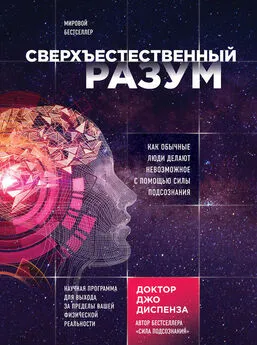

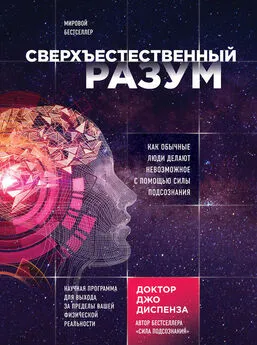

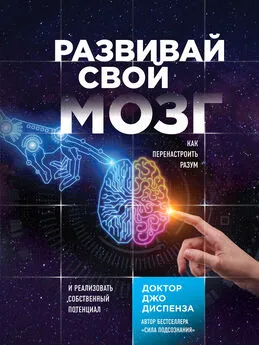
![Джо Холдеман - Мост к разуму [сборник]](/books/1069898/dzho-holdeman-most-k-razumu-sbornik.webp)
